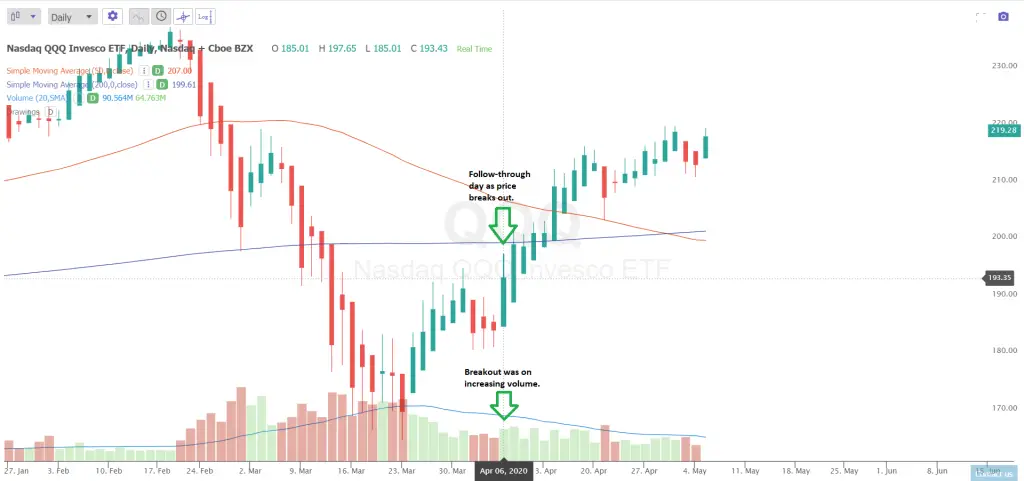A follow-through day is a bullish signal created by William J. O’Neil to quantify a high probability change in a current stock market direction from a downtrend to starting a new up trend.
Follow-through days signal during downtrends, corrections, and bear markets when a key stock market index closes much higher than the previous day’s closing price on higher volume. It usually happens on at least day four or sometimes later when the market is trying to rally into an upswing in price.
Before a follow-through day can happen there must be an attempt at a move higher inside an overall downtrend when at least one of the primary stock market indexes closes at a higher price than the previous day. The new upswing attempt stays valid if the stock market index does not make any new lows in price but goes up with higher highs and higher lows are stays in a range that holds the previous lows in price.
Key follow-through day signal filters are:
- A stock market index closing higher than 1% on higher volume.
- Current leading stocks are also up at the time of the follow-through day.
- Market price action has improved by holding support levels and beginning to attempt to break current resistance levels.
The biggest follow-through days historically have happened between day 4 and day 7 of an upswing at the beginning of a new uptrend.
After a follow-through day is confirmed and a new uptrend in price begins the stock market index should continue to make new higher highs on big volume, and leading stocks should break out of previous trading range resistance and also move higher. Higher highs and higher lows with leading stocks under accumulation is confirmation that the follow-through day is valid and new leg up in price has begun.
This is one of the first steps to show new accumulation patterns in equities as an asset class as the stock market moves from a downtrend to a new valid uptrend in price.
